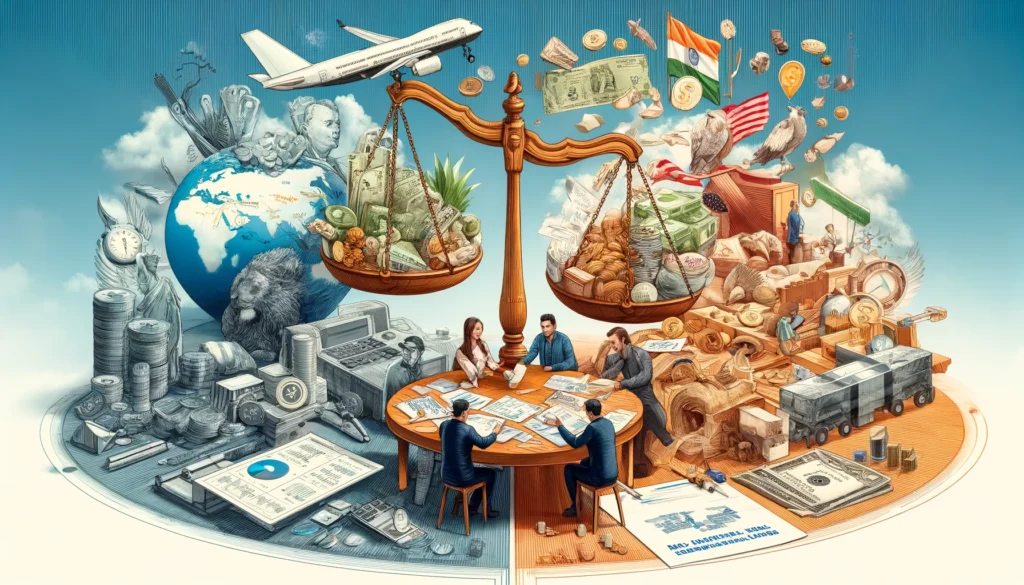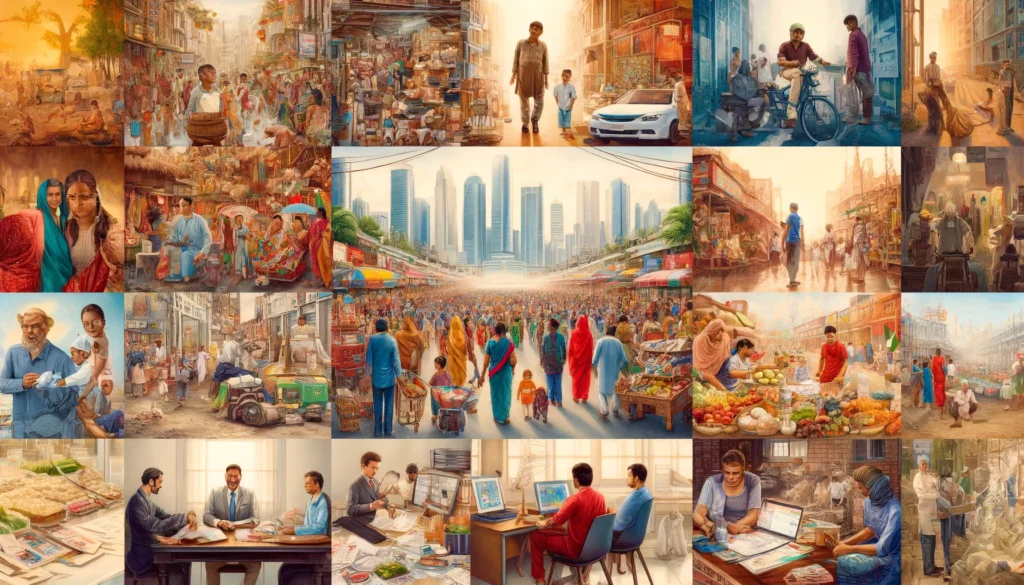The Balance of Trade (BoT) is an economic concept that represents the difference between the value of a country’s exports and imports. For a vibrant economy like India, understanding the BoT is not just for economists or business moguls; it’s crucial for everyone. This blog demystifies how India’s trade balance affects the nation and, more personally, its impact on the common man.
The Balance of Trade in India
India’s economic tapestry is vibrant, woven with various goods and services it trades globally. Currently, India exhibits a dynamic trade scenario where technology services, textiles, and pharmaceuticals are major exports, while oil, gold, and electronics top the imports chart. This trade dynamic shapes our BoT, influencing everything from currency value to job markets.
The BoT is like a financial health report card for the country. A positive balance, or surplus, means India sells more than it buys from abroad, leading to a flow of foreign currency into the nation. Conversely, a deficit occurs when imports surpass exports, raising concerns about foreign debt and currency devaluation.

Impact on the Indian Economy and the Common Man
The BoT is a pivotal economic indicator, deeply intertwined with India’s economic vitality. A surplus often heralds economic prosperity, strengthening the Rupee and fostering job creation, as industries flourish and demand more workforce. However, a deficit could lead to borrowing from other countries, potentially weakening the currency and affecting everything from inflation rates to daily expenses.
For the average citizen, the BoT’s effects are tangible. A healthy trade balance can mean more stable prices in the market, making daily goods and services more affordable. It also can lead to more job opportunities as businesses expand. In contrast, a trade deficit might inflate prices, making your grocery bills heftier and potentially leading to job scarcity in import-dependent sectors.
Why It Matters to You
The BoT isn’t just a number; it’s a snapshot of national economic health that indirectly colors the canvas of our personal financial landscapes. A strong trade balance supports robust economic growth, which translates to more employment opportunities, stable prices, and overall national prosperity. This prosperity, in turn, fuels better public services, education, and healthcare, enhancing the quality of life for each individual.
Understanding the BoT helps citizens make informed choices, from voting on trade policies to making personal investment decisions. It encourages a proactive approach to national economic debates and personal financial planning, highlighting the interconnectivity of global economics and individual livelihoods.

Conclusion and Call to Action
Grasping the concept of the Balance of Trade and its ramifications on the Indian economy and personal living standards is essential for every citizen. It’s more than just an economic metric; it’s a reflection of our nation’s economic health and future trajectory.
Stay curious, stay informed, and engage in the economic dialogues shaping our country. Your understanding and involvement can contribute to a balanced and prosperous economic future for India.
Author’s Note
This blog aims to explain the complex concept of the Balance of Trade and its significance in the Indian economy, providing insights into how it impacts the common man. The goal is to foster understanding and encourage active participation in economic discussions, enhancing financial literacy and national well-being.
G.C., Ecosociosphere contributor.
References and Further Reading
- “The Argumentative Indian” by Amartya Sen – Offers insights into India’s economic history and policy impacts.
- “Fault Lines” by Raghuram G. Rajan – Explores the global economic landscape and India’s position within it.
- “India Unbound” by Gurcharan Das – Chronicles India’s economic journey and its implications on trade and growth.



